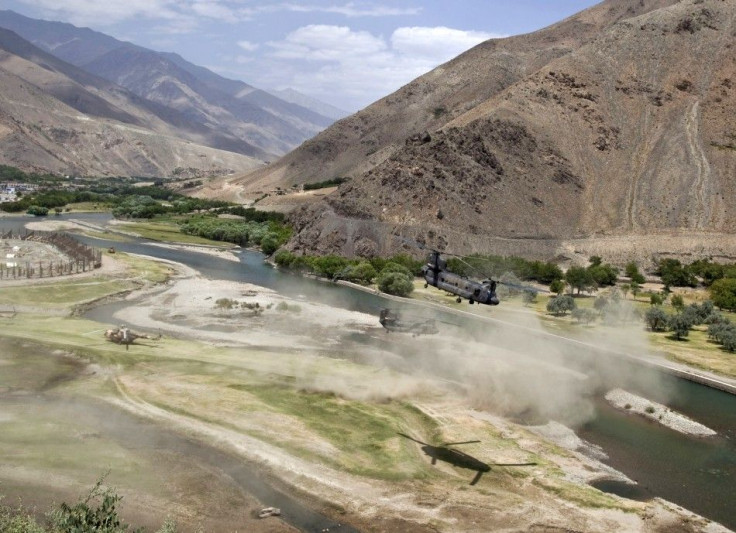NATO Killed Taliban Insurgents Who Shot Down Chinook Helicopter

Nato forces killed the Taliban insurgents who shot down a Chinook helicopter on Saturday, which resulted in the death of 38 Afghan and American troops, to include 22 SEAL Team 6 members.
The commander of U.S. and coalition forces in Afghanistan said coalition forces used a precision airstrike to kill the insurgents involved in the Aug. 6 downing of the helicopter.
Marine Corps Gen. John R. Allen told Pentagon reporters that the action was the continuation of the original mission to disassemble the leadership of an enemy network in Wardak province's Tangi Valley.
"This does not ease our loss," Allen said. "But we must and we will continue to relentlessly pursue the enemy."
Allen said close to midnight on Aug. 8, coalition forces called in a precision airstrike with F-16s over the Chak district of Wardak province. International Security Assistance Force, or ISAF, officials released information on Wednesday stating that the strike killed Taliban leader Mullah Mohibullah and the insurgent who fired the shot.
ISAF believe the shot that took down the NATO helicopter was a rocket-propelled grenade, Allen said.
Mohibullah is said to be a key facilitator in an insurgent attack cell led by Din Mohammad, a Taliban leader killed in a previous special operations mission, ISAF officials said. Mohibullah had as many as 12 Taliban fighters under his command, including potential suicide bombers, according to a statement from the U.S. Department of Defense.
The special operations forces were able to take down the enemy after receiving several intelligence leads and tips from local civilians and an exhaustive manhunt, ISAF officials said. The forces located Mohibullah and the shooter as they were trying to leave the country.
When they located the insurgents, the security force followed them to a wooden area in the Chak district. The forces called in an airstrike when they were sure the area was free of civilians, the defense department said, killing Mohibullah, the shooter and several Taliban associates.
When the Chinook helicopter crashed on Aug. 6, special operations forces were being carried in pursuit of insurgents from Mohammad's network who were on the run from an incident in which six militants had already been killed, ISAF officials said.
Allen said the ISAF isn't sure as yet if the enemy fire was the sole reason for the helicopter crash, and that when the aircraft encountered small-arms fire from several insurgent locations when it was approaching.
Officials began an investigation into the crash and its causes on Tuesday when Marine Corps Gen. James N. Mattis, commander of U.S. Central Command, appointed Army Brig. Gen. Jeffrey Colt as lead investigator, the defense department said.
Allen said the question that still remain are "What was the cause of the crash?" and "What lessons can be learned as a result of that cause?"
Answering these questions can improve future missions, Allen added.
He also said the crash "was a singular incident in a broader conflict in which we are making important strides and considerable progress."
The Taliban, according to Allen, are losing territory, leadership, weapons and supplies and public support.
"They face relentless pressure from coalition and, increasingly, Afghan forces," he said.
© Copyright IBTimes 2024. All rights reserved.












